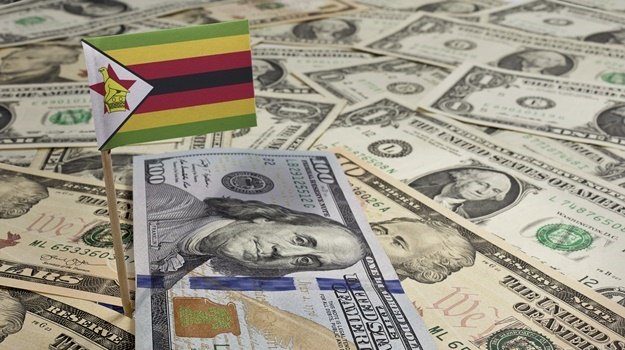No immediate response on interest rates front
THERE will not be any immediate interest rate respite for local companies in need of fresh debt to fund their operations after the Reserve Bank of Zimbabwe (RBZ)’s latest decision to maintain the current hawkish monetary policy stance for durable economic stability.
A hawkish monetary policy, according to WallStreetMojo, refers to an aggressive monetary policy implemented by a nation’s central bank when it wants to contract financial liquidity.
Its purpose includes maintaining healthy employment levels, and minimising rising prices, and maintaining macroeconomic stability.
Zimbabwe’s tight monetary policy regime forms an integral element of policy measures – fiscal and monetary authorities have rolled out since early May to rein in resurgent exchange rate-driven runaway inflation.
This has seen the bank policy rate remaining unchanged at 150 percent, after being hiked from 140 percent in June this year, to stay the course of policy interventions that have helped to restore sanity in the economy.
But the elevated bank policy rate, which provides the regulatory benchmark for the minimum interest rates charged by commercial banks, has made borrowing pricey in a market already squeezed of local currency liquidity, posing significant challenges for businesses to obtain working capital.
Zimbabwe experienced sustained steep price increases after the first quarter of this year, as the domestic currency depreciated rapidly against the US dollar.
With more than 75 percent of Zimbabwe’s economy informalised, most businesses/traders index their local currency prices to parallel market exchange rates, as such, prices of goods and services largely follow dynamics on the informal market.
To rein in the resurgent exchange rate volatility and price increases, both the monetary authorities and Treasury rolled out a series of measures to steady the economy.
The policy interventions included increasing the bank policy rate from 140 percent to 150 percent to curtail speculative borrowing, transfer of external payment obligations from the apex bank to the Treasury and payment of duties in local currency (except for luxury goods).
In addition, the fiscal authorities directed the Zimbabwe Revenue Authority (Zimra) to collect in local currency 50 percent of corporate tax payable in forex while all public institutions were directed to take payments for fees and charges in the domestic unit to promote its wider use in the economy.
Treasury also assumed the responsibility to fund the Zimbabwean dollar component of the 25 percent foreign currency collected by exporters to eliminate the creation of excessive money supply.
Economist and MPC member, Persistence Gwanyanya, said this week they “opted to stay the course, as the Monetary Policy Committee continues to tighten the monetary policy.
“Despite the stability of the exchange rate and reduction of prices, we decided it was not the right time to do anything on the interest rates. We want stabilisation to take effect, we want to maintain things as they are currently,” he said.
The policy interventions, especially the high interest rate regime, will keep the market starved of local currency liquidity, as companies find the cost of money to be too expensive.
The Confederation of Zimbabwe Industries (CZI), the country’s largest business lobby group, noted in a brief to members recently that although currently the Zimbabwe dollar has been mopped out from the market, this left the industry starved of liquidity it needs to run operations.
“Excess (Zimbabwe dollars) will cause an exchange rate depreciation while a market starved of (Zimbabwe dollars) might also entrench dollarisation and retard growth. It is expected that the authorities will work out an optimal balance soon,” CZI said.
CZI chief economist, Conrad Dube, said in an interview that while productive companies had the privilege to borrow at a cheaper medium-term accommodation rate of 75 percent, with the rest of the economic agents remaining at a minimum of 150 percent, most industrial players had shifted to borrowing lower-priced US dollars.
“If you have a higher interest rate for the Zimbabwe dollar, obviously businesses would want to borrow in USD because it (bank policy rate) discourages borrowing in Zimbabwe dollars.
“They would want to borrow in USD, just because the Zimbabwe dollar is also scarce, the impact (for those borrowed in USD) in terms of borrowing is limited because very few companies are borrowing in Zim dollars.
“Currently, it is not so much about the interest rate, that it is at 150 percent, but (the danger) that if you borrow today and later the Government increases the interest rate to 300 percent they would say it applies to existing borrowings.
“So, no one wants that uncertainty anymore, they would rather go for the stable USD borrowings,” Dube said.
Commenting on the same issue, Zimbabwe National Chamber of Commerce (ZNCC) chief executive officer, Chris Mugaga, said the current exchange rate regime, though still below yearly inflation (101 percent in July), was unsustainable for business.
Mugaga said the benchmark bank policy interest rate level was “too much” in an environment where the majority of borrowers do not have the security to take long-term debt.
“Right now, whatever you are borrowing is short term, so in the absence of a robust money market, coupled with the short-term advances, those interest rates are untenable in this environment,” he said.
He said anyone borrowing Zimbabwe dollars at current thresholds faced the risk of loan defaults, which would drive higher non-performing loans on the books of banks.
Mugaga also said the current scenario increased the cost of doing business and could drive speculative activities as little profit could be made from productive operations.
Last week, RBZ Governor Dr John Mangudya, told Business Weekly that the bank’s decision on interest rates will always be guided by inflation developments, stressing the bank will not rush to reduce interest rates before it is satisfied the stability will be durable.
Following its meeting on Friday last week, the bank’s MPC expressed satisfaction with the impact of the measures, which have stabilised the exchange rate and domestic prices.
Consequently, the MPC noted, month-on-month inflation, which peaked at 74,5 percent in June 2023, fell to minus 15,3 percent in July 2023, while annual inflation fell from 175,8 percent in June 2023 to 101,3 percent in July 2023.
It expects month-on-month inflation to continue to decline in the outlook period to December 2023.
Dr John Mangudya, who chairs the PMC, recently told this publication that the bank was of the view that it was important to stay the course of obtaining stability, which has completed the final missing puzzle of key fundamentals required to drive sustainable growth.
He said the bank, through the MPC, noted that economic fundamentals were strong to sustain the current stability, as reflected by the robust economic growth of 5,3 percent expected in 2023.
Dr Mangudya pointed out that Zimbabwe’s key economic fundamentals have never been as strong as currently being witnessed. This includes the favourable balance of payments position and fiscal sustainability.
In his statement after Friday’s MPC meeting, Dr Mangudya said: “The strong economic fundamentals, coupled with stability in prices, will be critical in preserving the value of the domestic currency and enhancing confidence in the economy.”-ebusinessweekly







